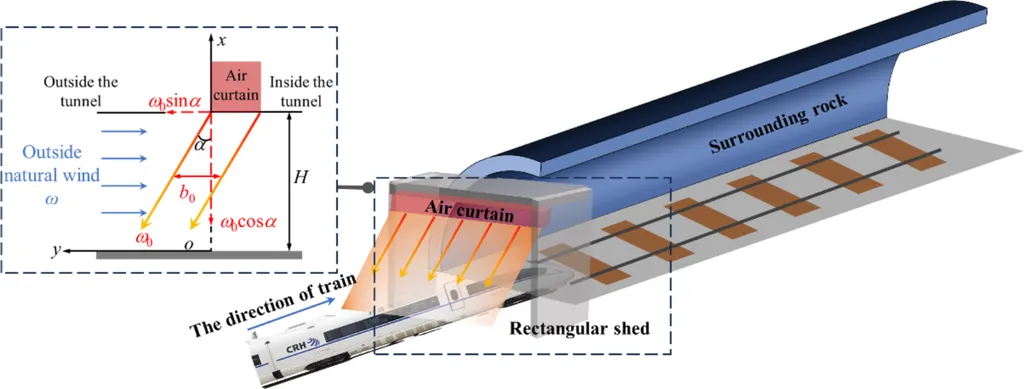In the quest for energy efficiency, a technology that has been quietly gaining traction is air curtain thermal insulation. This method, which creates an invisible barrier of air to control temperature and humidity, is becoming increasingly relevant as global energy consumption for heating and cooling continues to rise. A recent study published in *Taiyuan Ligong Daxue xuebao* (Journal of Taiyuan University of Technology) delves into the progress and potential of this innovative technology, offering insights that could reshape the energy sector.
Led by KANG Liming from the College of Civil Engineering at Taiyuan University of Technology, the research provides a comprehensive review of air curtain thermal insulation technology. “Air curtain technology offers a high-efficiency, energy-saving solution that doesn’t obstruct passage,” KANG explains. “Its adaptability in various fields, from commercial buildings to food storage, makes it a promising area of study.”
The study introduces the heat transfer mechanisms and performance evaluation indices of air curtains, highlighting recent advancements in performance optimization. It also summarizes and compares main evaluation models, including flow superposition, deflection modulus, orifice outflow, data-driven, two-fluid, and entrainment models. Each model offers unique advantages, and the choice depends on specific applications and requirements.
One of the key findings is the technology’s potential to significantly reduce energy consumption in refrigeration and heating. As KANG notes, “With the increasing demand for comfort and food storage, the energy-saving advantages of air curtain insulation technology are becoming more prominent.” This is a crucial insight for the energy sector, where reducing consumption is a constant challenge.
The research also provides a forward-looking perspective on the future development and challenges of air curtain insulation technology. It suggests that further advancements in modeling and optimization could enhance the technology’s efficiency and applicability. This could lead to broader adoption in various industries, from commercial buildings to industrial facilities.
For the energy sector, the implications are substantial. As buildings and facilities strive to become more energy-efficient, air curtain technology offers a viable solution. It’s a technology that could help reduce energy consumption, lower costs, and contribute to sustainability goals.
In conclusion, the study by KANG Liming and colleagues sheds light on a technology that could play a significant role in the future of energy efficiency. As the world continues to grapple with energy consumption challenges, innovations like air curtain thermal insulation offer hope for a more sustainable future. The research, published in the Journal of Taiyuan University of Technology, serves as a valuable resource for professionals in the energy sector, providing insights that could drive future developments in this promising field.

